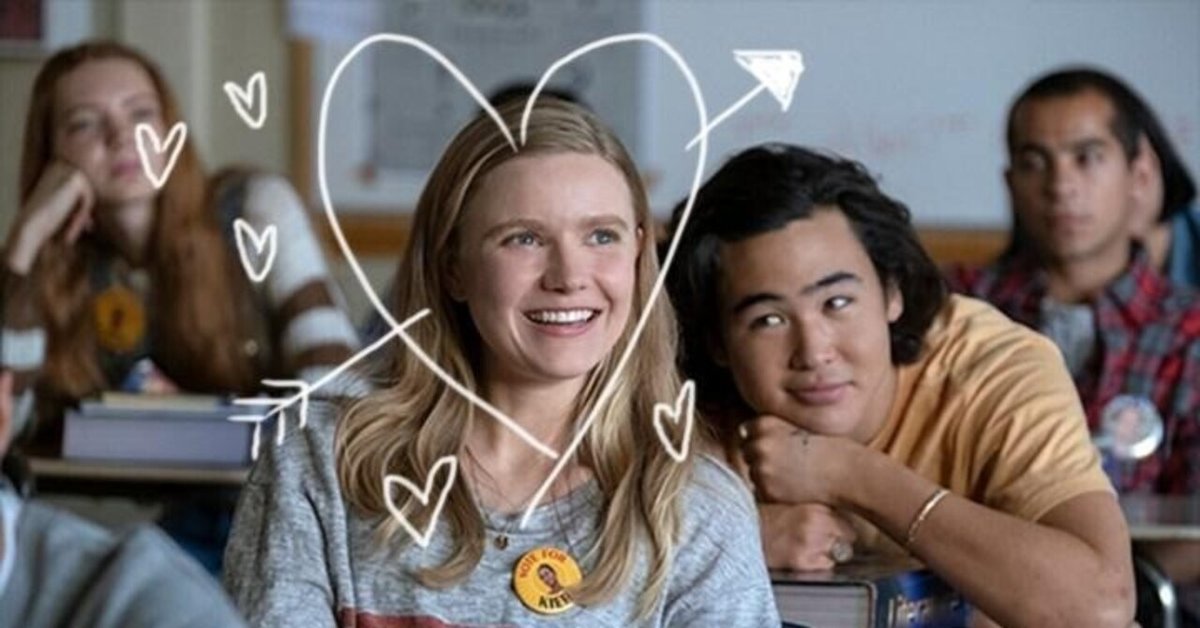
Is There an Easy Fix to Overcoming Gender Bias in Media?
By Diandra
日本語は下にあります!
How do you feel about clichés? When Rapunzel was locked in her tower in need of help, her prince came to rescue her and set her free of all her misery. It’s a trope in fiction and fairy tales that has been done over and over again. But what if it was the prince who was locked in a tower and Rapunzel was the one to save him? That surely feels like a plot twist, doesn’t it? This is considered as a gender inverted trope, where common tropes in fiction between a female and male character are switched.
Portrayals of Gender Inverted Tropes in Media
Gender inverted tropes have recently gained a bit of popularity for its new take on clichés. A female character tripping and falling into the arms of her male love interest, a male character dramatically grabbing the female character’s wrist - these scenarios are so familiar to us that we can expect it just from the build-up of the scene. But to see these overdone tropes showcased in the opposite way can bring a new and refreshing feeling for viewers. Korean dramas have become a popular source of well known gender inverted trope scenes, with clips posted on YouTube garnering millions of views.
Though gender is not binary, it is most common that these tropes are showcased in media as only existing between the male and female genders. While inverted tropes can feel exciting to watch or read about, we should remember that an inverted trope is simply a scenario where 2 genders are switched. This also means that some inverted tropes might completely change the story’s context and possibly result in double standards. One example would be the trope of a “crazy ex-girlfriend” that is often used in a comedic manner. When its gender is switched to a “crazy ex-boyfriend”, it will most likely be portrayed in a scary and realistic way. Another very important example would be the trope of being seduced by a teacher in high school or university. It is no doubt how inhumane this act is regardless of gender, but its portrayal in media has proven otherwise as the trope of female teachers seducing her male student has consistently occurred throughout the years without showcasing its true danger.
How do Gender Roles Factor into Fiction?
When discussing gender roles and overcoming them, we can also question if simply inverting gender tropes would make an impact at all. Let’s look at Mulan as an example - the Disney animated film tells the story of a young girl who took a risk to save her family and in return had to train as a warrior. What is commonly seen as a “manly” role is now placed upon a woman. Criticisms arose with its life action remake, where Mulan is seemingly born with perfect skills. The difference here lies in the animated version showcasing Mulan’s journey to becoming an honorable warrior who started off with no skills but worked hard to earn it, and the life action version of Mulan fell short with audiences.
All of this makes me wonder, is inverting the genders of tropes the easy fix to overcoming gender bias? It is fair to think that giving everyone equal tropes regardless of gender can take us a step further in the media industry. But it is also worth noting the characterization and portrayal of these fictional characters will be the most important factors of all. The 2021 Netflix movie “Moxie” captured the attention of many viewers with one particular character, Seth, who played as the main character’s love interest. Seth’s character is built off of the classic “heartthrob” trope in high school romance fiction, but what makes him become a stand out character in this movie is his characterization. A dreamy, skateboard-riding, sweet-smiled boy indeed, but beyond that he is kind and supportive to his peers and girlfriend. Seth is also able to stand his ground when being mistreated, even by the person he loves. Initially, it felt as if Seth was just there to act as the cute and sweet guy that the main character ends up dating, but Seth is just as complex as the rest of us in real life, thanks to his characterization. Books, movies, or TV series are well beloved by all and it is easy to find comfort in these forms of media - so instead of just simply inverting tropes, it would feel much wiser for characters to be written in traits that defeat gender bias and uplifts them at the same time regardless of gender.
#WeAreUnstoppable ⭐️
▼This is Equal. If you like our content, please give us a follow🙏
https://note.com/equal_apu
▼SNS🌱💛
Web site→ https://equalityapu.wixsite.com/website?lang=ja
Instagram→ https://www.instagram.com/equal.apu/?hl=ja
Twitter→ https://twitter.com/equalapu
Facebook→ https://www.facebook.com/equal.apu
Note→ https://note.com/equal_apu
YouTube→ https://www.youtube.com/watch?v=e3qclECdCsk
Official LINE:https://lin.ee/D9ZCxNF
メディアにおけるジェンダー・バイアスを克服する簡単な方法はあるのか?
by ディアンドラ
あなたは決まり文句についてどう感じますか?ラプンツェルが塔に閉じ込められたとき、王子が助けに来て、彼女をすべての不幸から解放してくれました。これは、小説やおとぎ話で何度も繰り返されてきた決まり文句です。しかし、もし塔に閉じ込められていたのが王子で、ラプンツェルが彼を救うとしたらどうでしょうか?それはきっと、どんでん返しのように感じられるのではないでしょうか?これは、フィクションにおける女性キャラクターと男性キャラクターのありがちな構図が入れ替わる、性別反転型表現と考えられています。
メディアにおける「男女逆転」の描写について
性別が逆転した表現は、ありふれた表現に新しい風を吹き込み、最近ちょっとしたブームになっています。女性キャラクターがつまづいて恋人の男性の腕に倒れ込む、男性キャラクターが女性キャラクターの手首を大胆につかむ、などのこうしたシナリオは、シーンの展開から予想できるほど私たちになじみの深いものです。しかし、このようなお決まりの演出を逆に見せることで、視聴者は新鮮な気持ちで見ることができるのです。韓国ドラマは、よく知られた男女逆転のシーンを作り出す源となっており、Youtubeに投稿された映像は数百万ビューを記録しています。
ジェンダーは二元的ではないものの、メディアでは男性と女性の間にのみ存在するものとして紹介されるのが一般的です。しかし、「男女逆転」とは、単に性別が入れ替わるだけのシナリオであることを忘れてはいけません。つまり、ある種の逆転現象は、物語の文脈を完全に変えてしまい、二重基準をもたらす可能性があるということです。例えば、コメディタッチで使われることの多い「クレイジーな元カノ」。その性別が「クレイジーな元カレ」に変わると、恐ろしくてリアリティのあるものとして描かれる可能性が高いでしょう。また、もう一つ非常に重要な例として、高校や大学で教師に誘惑される、という表現があります。この行為がいかに非人道的なものであるかは、性別に関係なく間違いないのですが、メディアでは、女性教師が男子生徒を誘惑するという図式が長年一貫して起こっており、その真の危険性を示すことなく描かれていることが、それを証明しています。
フィクションに性別による役割分担をどう組み込むか?
性別による役割分担とその克服について議論するとき、単に性別による常識を覆すことがインパクトを与えるかどうかも疑問視されることがあります。例えば、ディズニーのアニメ映画「ムーラン」は、家族を救うために危険を冒し、その代わりに戦士としての訓練を受けなければならなかった少女の物語ですが、一般的に「男らしい」役割と考えられているものが、ここでは女性に課せられているのです。しかし、ムーランが完璧なスキルを持って生まれたように描写された実写版は批判の声が上がりました。よって、ムーランを、なんの能力も持っていない状態から、能力を獲得するために努力した立派な戦士として描いたアニメ版に比べて、ムーランの実写版の評判は低くなりました。
これらのことから、性別の役割分担を反転させることは、ジェンダーバイアスを克服するための簡単な解決策なのだろうかと考えさせられます。性別に関係なく、すべての人に平等な表現を施すことで、メディア業界は一歩前進することができると考えるのは当然でしょう。しかし、こうした架空のキャラクターの性格づけや描写が、何よりも重要な要素になることも注目すべき点です。2021年のNetflix映画「Moxie」は、主人公の恋敵として演じたセスというある特定のキャラクターで多くの視聴者の関心を集めました。セスのキャラクターは、高校生の恋愛小説における定番の「胸キュン」という図式で作られていますが、本作で彼が際立ったキャラクターとなったのは、そのキャラクター設定にあります。スケボーに乗り、甘い笑顔で夢見る少年である一方、それ以上に仲間や恋人に優しく、協力的なのです。また、好きな相手から虐待されても、自分の立場を貫くことができる。当初、セスは主人公が付き合うことになるかわいくて優しい男を演じるためだけに存在するように感じられましたが、セスは現実の私たちと同じような複雑なキャラクター設定になっています。本や映画、テレビシリーズなどは、万人に愛されるメディアであり、そこに安らぎを感じるものです。だからこそ、性別の役割を反転させるのではなく、ジェンダーバイアスを打ち破り、かつ性別にとらわれないキャラクターを描くことが、より望ましいことであると感じます。
Translations by: Kokona
#WeAreUnstoppable ⭐️
▼イコールです。よければフォローお願いします🙏
https://note.com/equal_apu
▼SNS🌱💛
Web site→ https://equalityapu.wixsite.com/website?lang=ja
Instagram→ https://www.instagram.com/equal.apu/?hl=ja
Twitter→ https://twitter.com/equalapu
Facebook→ https://www.facebook.com/equal.apu
YouTube→ https://www.youtube.com/watch?v=e3qclECdCsk
Official LINE:https://lin.ee/D9ZCxNF
